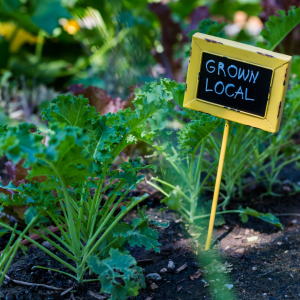 Rooftop gardens in New York City. Beekeeping in the heart of Fort Smith. Pandemic-inspired victory gardens in your own backyard. Urban agriculture is as diverse as the communities practicing it, and it has a history stretching back millennia. Evidence of urban farming dates as far back as Mesopotamia, proving that the concept of growing food within cities is anything but new.
Rooftop gardens in New York City. Beekeeping in the heart of Fort Smith. Pandemic-inspired victory gardens in your own backyard. Urban agriculture is as diverse as the communities practicing it, and it has a history stretching back millennia. Evidence of urban farming dates as far back as Mesopotamia, proving that the concept of growing food within cities is anything but new.
Throughout history, major events—like wars or economic downturns—have driven surges in urban agriculture. From the allotment gardens in Germany to Pingree’s Potato Patches in 1893 Detroit, and the widespread citizen gardening efforts during WWII in the United States, Canada, and the UK, communities have repeatedly turned to urban farming in times of need.
How to Start Your Urban Garden
If you’re like me, the idea of growing your own food sounds amazing—until you realize you’ve impulsively bought 87 plants and a flock of chickens without a clue what to do with them. Before diving in headfirst, take a step back, breathe, and follow these simple steps to set yourself up for success:
1. Start with a Plan (A Realistic One)
Creating a solid and achievable plan is vital. Here’s what to consider:
- Evaluate Your Space: Get creative with the area you have. If you’re working with limited room, vertical farming—growing crops upward instead of outward—can maximize every square inch.
- Choose Your Crops Wisely: Think carefully about what you want to grow. Ask yourself: What will you actually use? What fits within your available space? Remember, some plants require significant spacing. For example, I learned a tough lesson when I planted a dozen zucchini plants but only had room for a few. More isn’t always better.
- Seek Advice: Visit your local coop for expert guidance. They’ll help you decide what to plant and how many plants you’ll need for your goals.
2. Get the Right Tools and Materials
Before making any purchases, ensure you’re equipped with the right supplies:
- Containers: Different plants have different needs when it comes to rooting space. Check the growing instructions for your chosen crops to find the right containers. Some plants thrive in small spaces, while others require room to spread out. A little research will save you time, money, and frustration. Again, your local coop can help!
- Soil: The foundation of any successful garden is quality soil. Whether you prefer Miracle Gro, Happy Frog, or another brand, focus on good drainage. Soggy roots can ruin your plants, so make sure your soil is well-suited for your crops.
3. Understand Sunlight and Climate
Knowing how much sun your garden space gets is crucial before you start planting. In Arkansas, where temperatures can soar, heat- and drought-resistant plants are often the best choice. Consider your local climate and the resilience of your plants to ensure they thrive in the conditions you’re working with.
The Essentials for Success
The key to a thriving urban garden comes down to three factors: space, soil, and sun. Plan carefully, do your research, and don’t hesitate to seek advice from your local Farmers Coop—they’re an invaluable resource for aspiring urban farmers.
With a thoughtful approach, you can create your own victory garden, no matter your space constraints. So roll up your sleeves, dig in, and start growing!
By Ryanne Harper



